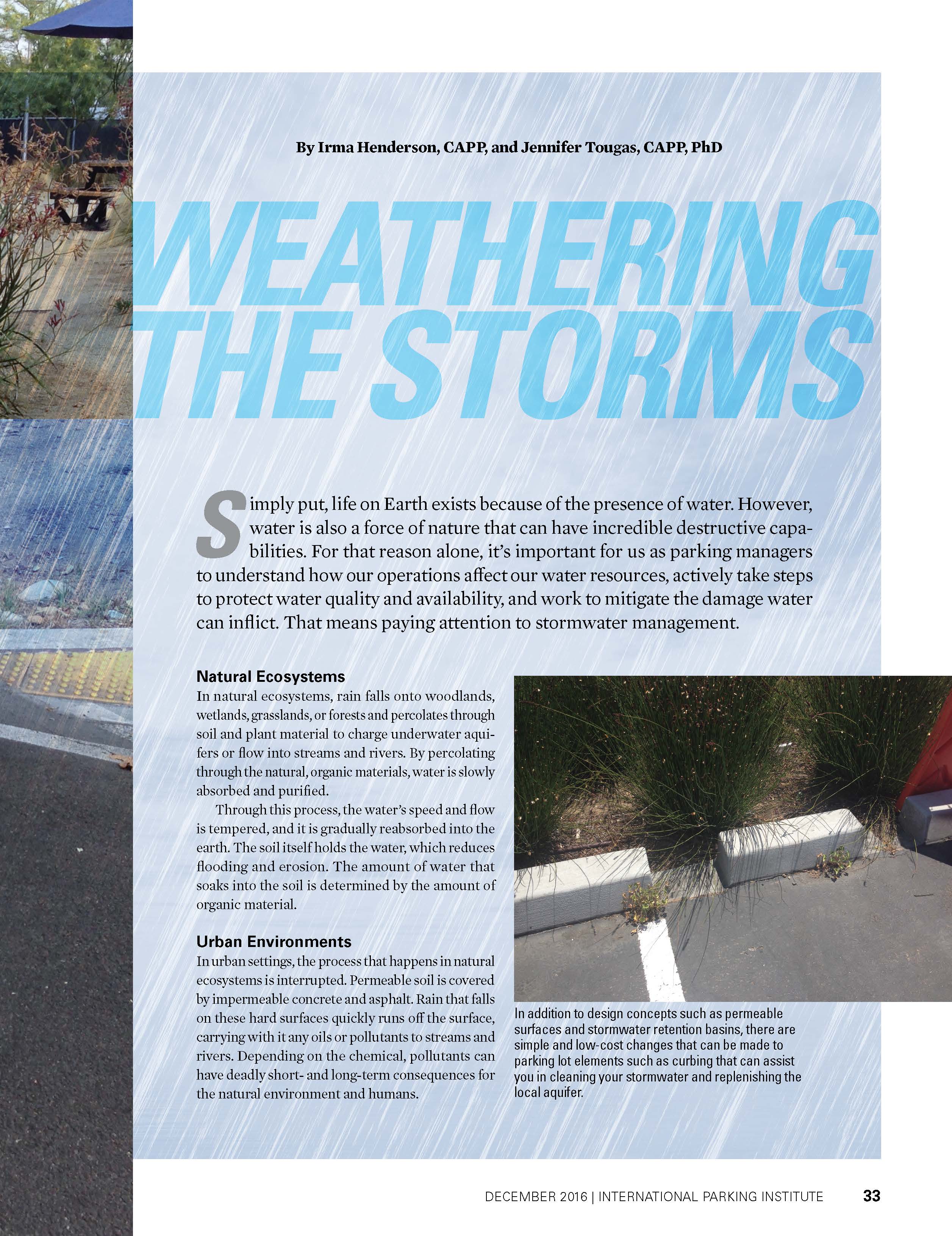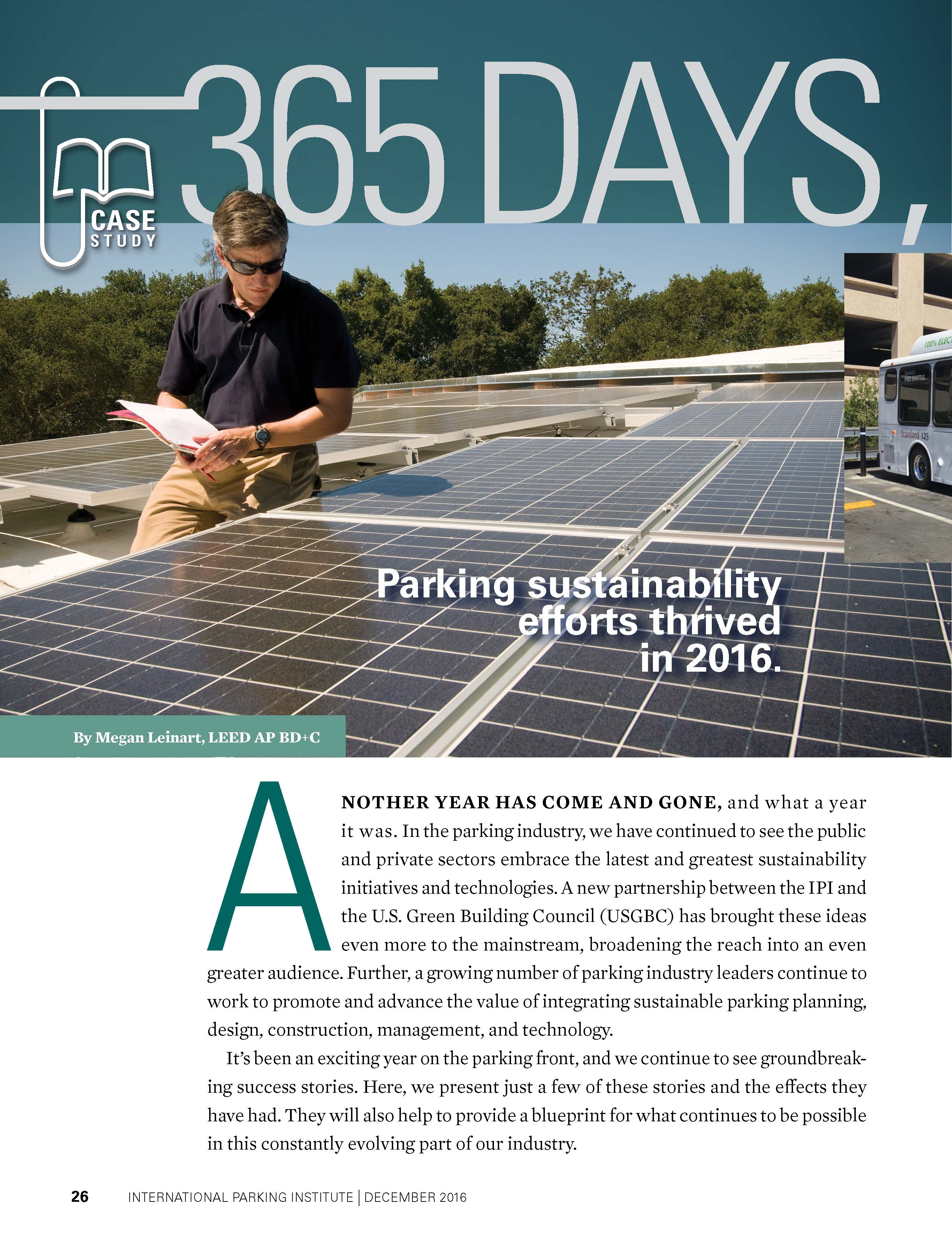Getting Connected
By Mark Braibanti
What changes in technology mean for parking and municipalities in the 21st century and beyond.
Did you know drivers waste more than 55 hours every year looking for parking? Studies also show that up to 30 percent of traffic in urban areas is a result of drivers circling the block in search of that elusive parking spot. This figure doesn’t even account for the number of times drivers have abandoned their search for a parking space entirely. The point is, finding parking can be painful and is one of the biggest issues facing drivers, automakers, parking operators, and municipalities.
also show that up to 30 percent of traffic in urban areas is a result of drivers circling the block in search of that elusive parking spot. This figure doesn’t even account for the number of times drivers have abandoned their search for a parking space entirely. The point is, finding parking can be painful and is one of the biggest issues facing drivers, automakers, parking operators, and municipalities.
What can ease this pain? Widespread access to dynamic real-time information is key. As the connected car continues to evolve, real-time parking information is becoming a staple of innovation and a necessary component of the overall driving experience. Cars are no longer just for getting from point A to point B—drivers want to know where, when, and how to park.
As emphasized by Mary Barra, CEO of General Motors, “The auto industry is poised for more change in the next five to 10 years than it’s seen in the past 50.” The growing millennial population, in combination with rapidly improving technology, is the stimulus for this change. Vehicle miles traveled actually decreased between 2003 and 2014 in the United States, but as a former traffic commissioner of New York City noted, “It wasn’t caused by the recession. It was millennials. They were driving 20 to 25 percent fewer miles. That was extraordinary, and the trend was that driving and parking [for millennials] was a hassle.” As vehicle miles started to decrease, innovative technology, digitization, increased connectivity, and the millennial generation began fueling the demand for smarter, more integrated driving experiences.
Poised for Change
In 1908, Ford Motors’ Model T was released to the public and became the first mass-produced commercially available automobile. As explained by Mashable’s James O’Brien, this was the “technological starting point for the car as not only a thing people could go out and buy, but also as a medium for new ideas with which future developers could work.”4 From then on, the auto industry took off, from performance improvements such as electric ignitions, four-wheel brakes, and power steering, to the adoption of an entire driving experience with the advent of cigarette lighters, car radios, and CD players.
We are now in an era of data-centricity, with complex technology and algorithms improving diagnostics, navigation, and hybrid vehicles. Among the technological innovations surfacing in the auto industry right now are what we call the ACES: autonomous, connected, electric, and shared vehicles.
Autonomous cars are defined as vehicles capable of sensing their environments and navigating without human input, such as those being tested by Google, Tesla, and Uber. They rely on connected car technology to safely drive themselves. Relatedly, connected cars are, as the title infers, connected to the internet. Connected cars provide a wide array of services for safety, navigation, convenience, and entertainment. All of these services rely on analyzing large amounts of big data so these cars are constantly collecting and analyzing information for the greater good.
Electric cars are the oldest current trend, but ownership of these vehicles continues to increase. Lastly, shared vehicles have recently taken off and are causing a slight panic in the auto, taxi, and parking industries. The millennial generation is showing a preference for using services such as Uber and Lyft over car ownership. Ironically, this trend is actually pushing automakers toward creating better connected cars to compete.
Finding Its Own Parking
By 2020, BI Intelligence estimates that 75 percent of cars shipped globally will be equipped with internet connectivity.5 That equates to more than 250 million connected cars on the road in just four years. Compared with 25 million connected cars in 2015, this movement toward connected services represents a significant shift in technological needs for the auto industry. Manufacturers are increasing their production and working quickly to offer connected features to stay competitive and on pace with consumer demand.
In addition to improving our lives through more efficient mobility, improved safety, and less environmental damage, connected cars are dramatically affecting how people park. The current parking experience can be one of frustration, wasted time, and often, disappointment. It’s painful for drivers who are faced with a non-uniform experience across lots and cities—experiences that include complicated non-standardized rate structures, limited payment options, and the stress of spending more than 20 minutes on average trying to find a parking spot during peak hours.6 Cities suffer too as uninformed drivers cause traffic delays as they circle the block looking for spots.
As much as real-time traffic is now viewed as being a necessity, drivers in the near future will expect their cars to help them easily find the closest and cheapest available parking, compare parking prices, types, etc., and pay conveniently and seamlessly.
Data-Centric, Dynamic Occupancy Models
Many connected cars already offer parking information through their navigation systems, but dynamic parking information is currently one of the strongest developing trends in the connected auto industry. Drivers want to know more than where a parking lot is—they want to know if there are spots available in lots near their destinations, in real-time.
As you likely read in the news recently, during the past five years, companies that focus on technology are beginning to transform the way people park their cars. In 2013, INRIX Parking launched the industry’s first parking navigation service to provide real-time parking information in connected cars. Two years later, it launched the first integrated on-street parking solution in partnership with BMW. Since then, automakers, including Lexus, Mercedes-Benz, Toyota, and Volkswagen, have implemented the technology to help drivers save time, fuel, and frustration. Developers have also begun to integrate dynamic parking information into their existing products through partnerships with existing platforms such as Google’s Waze.
The technology used to determine occupancy levels instantaneously requires complex aggregation of a variety of data sources—from integrating with existing infrastructure such as smart parking meters, to analyzing historical occupancy data, to collecting data directly from vehicles. For example, our company has a portfolio of data gathered from a network of 275 million vehicles and connected devices that incorporates anonymous real-time insights from partners in the auto industry. By collecting, refining, and analyzing all of this big data, we can accurately predict where parking is available and incorporate the information directly into a car’s navigation system.
Connected vehicles transmit a wide range of data that can be collected and used to predict current parking availability on city streets and at off-street parking facilities. Cars equipped with light detection and ranging sensors, usually used to let you know if you are getting too close to objects in the road, can be used to detect where open parking spaces are located as you drive.
For off-street parking, technology can tap directly into occupancy information from gates, loops, and pay stations. Partnerships with equipment makers help convert this massive amount of data into a format that can be used by automakers, cities, government agencies, and app developers.
For the development of on-street parking occupancy technology, driver-generated data such as vehicle location, speed, and direction help create a reliable, real-time availability model. A myriad of connected-car data points are processed into individual anonymized trips with distinct starting and ending points to understand vehicle location in relation to metered zones. Initial tests showed that this model achieved 80 percent accuracy when the zone size was optimized to capture as many arrivals and departures as possible, without capturing driving behavior unrelated to parking.
The addition of GPS navigation and city data further optimize both the on-street and off-street parking experience for drivers of connected vehicles as they are routed in real-time to the location of available parking spaces and forewarned of any parking restriction for a given spot, ensuring drivers are not led to an inaccessible or illegal parking space.
Digital Payments
As business and consumers alike increasingly transition to a variety of forms of digital payment, the auto industry is taking note and integrating the ability to pay for parking, both off- and on-street, via a vehicle’s navigation dashboard. With payments available via smartphone and car, drivers can easily handle parking transactions on the go.
The Future
According to analysts at Frost & Sullivan, searching for parking costs consumers and local economies nearly $600 million in wasted time and fuel every year.
The connected car will affect every facet of the transportation, parking, and city planning industries. This makes connecting every component of the parking eco-system to cars an essential part of the path forward. If not, parking lots risk being invisible to drivers if they aren’t integrated into the next generation of connected cars.
Much as cities were unprepared for ridesharing services such as Uber and Lyft, we cannot overlook the importance of connected cars. A new study conducted by the National League of Cities recently revealed that 94 percent of the world’s cities are not prepared to deal with autonomous cars.8 Cities and parking operators will soon begin to feel the effect of connected vehicles on their parking facilities. As an industry, we must embrace the connected car, or we will miss out on a whole host of benefits, from increased revenue to optimized parking management and reduced congestion. Collaboration is the key to innovation, so we must all work together to be at the forefront of the connected car revolution to drive parking into the 21st century.
TPP-2017-11 Getting Connected
MARK BRAIBANTI is director of marketing at INRIX. He can be reached at mark.braibanti@inrix.com.










